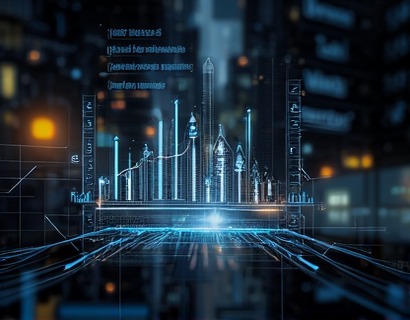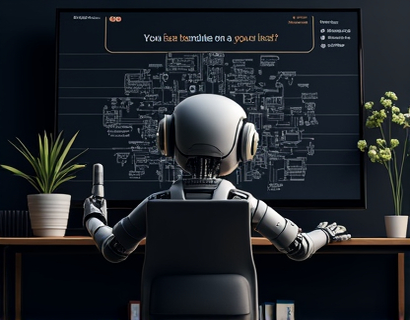Smart Home Elevation: Embracing the Future of Living
In the rapidly evolving landscape of home technology, smart home elevation has emerged as a transformative force, redefining the way we live and interact with our living spaces. This article delves into the latest innovations in smart appliances, exploring how these cutting-edge devices can seamlessly integrate into modern lifestyles, offering unparalleled convenience, efficiency, and comfort. From intelligent home automation to energy-efficient solutions, discover how these advanced appliances are not just gadgets but essential components of a smarter, more connected home.
Understanding Smart Home Elevation
Smart home elevation goes beyond the basic concept of smart homes by focusing on the integration of high-end, user-friendly appliances that enhance daily living. These appliances are designed to work in harmony, creating a cohesive ecosystem that simplifies tasks, saves time, and reduces energy consumption. The term "elevation" in this context refers to the upward trajectory of home living, where technology is leveraged to elevate the quality of life.
The core idea behind smart home elevation is to create a living environment that adapts to your needs, learning your preferences and habits to provide personalized experiences. This is achieved through advanced sensors, AI-driven algorithms, and seamless connectivity, allowing devices to communicate and operate efficiently without manual intervention.
Key Features of Smart Home Appliances
Smart home appliances are equipped with a range of features that set them apart from traditional models. Some of the most notable features include:
- Remote Control and Monitoring: Through smartphone apps or voice commands, users can control and monitor their appliances from anywhere, ensuring convenience and peace of mind.
- Energy Efficiency: Many smart appliances are designed to consume less energy, reducing utility bills and minimizing environmental impact. Features like smart thermostats and energy-efficient refrigerators play a crucial role in this aspect.
- Automation and Scheduling: Smart appliances can be programmed to operate at specific times, optimizing usage and saving resources. For example, a smart washing machine can start a cycle during off-peak hours to take advantage of lower electricity rates.
- Voice Control: Integration with voice assistants like Amazon Alexa or Google Assistant allows for hands-free operation, making it easier to manage multiple devices simultaneously.
- Predictive Maintenance: Advanced sensors and AI can detect potential issues before they become major problems, scheduling maintenance and alerts to keep appliances running smoothly.
Smart Home Automation: The Brain of Your Home
Home automation is the backbone of smart home elevation, coordinating various appliances and systems to work together seamlessly. A central hub or smart home controller acts as the brain, connecting and managing devices such as lights, security systems, and climate control. This centralization not only simplifies the user experience but also enhances the overall functionality and security of the home.
One of the most significant benefits of home automation is the creation of custom scenes and routines. For instance, a "Good Morning" routine can automatically turn on lights, adjust the thermostat, and start the coffee maker, all with a single command or at a set time. This level of customization ensures that your home is always tailored to your preferences and lifestyle.
Energy Efficiency: A Smart Choice for the Future
Energy efficiency is a critical aspect of smart home elevation, as it directly impacts both your wallet and the environment. Smart appliances are designed to optimize energy usage, reducing waste and lowering utility costs. Here are some ways in which smart appliances contribute to energy efficiency:
Smart Thermostats: These devices learn your temperature preferences and adjust heating and cooling schedules accordingly. By avoiding unnecessary heating or cooling when no one is home, smart thermostats can significantly reduce energy consumption.
Smart Lighting: LED bulbs and smart lighting systems can be programmed to turn on and off based on occupancy or natural light levels. Some systems even adjust the color and brightness of lights to suit different times of the day, enhancing both energy savings and ambiance.
Energy Monitoring: Smart meters and energy monitoring systems provide real-time data on energy usage, helping homeowners identify and address inefficiencies. This data-driven approach enables more informed decisions and better management of energy resources.
Health and Wellness: Smart Appliances for a Healthier Home
The integration of smart technology in home appliances extends to health and wellness, offering solutions that promote a healthier living environment. Here are some examples:
Air Quality Monitors: These devices monitor indoor air quality, detecting pollutants and allergens. Some smart systems can even connect to air purifiers, automatically activating them when poor air quality is detected.
Smart Refrigerators: Advanced refrigerators with built-in cameras and inventory management systems help reduce food waste by keeping track of expiration dates and suggesting recipes based on available ingredients. Some models even monitor food freshness and suggest when items should be consumed.
Water Quality Systems: Smart water filters and purification systems ensure that the water in your home is clean and safe to drink. These systems can alert you when filters need to be replaced, maintaining optimal water quality.
Security and Safety: Protecting Your Home
Security is a paramount concern for homeowners, and smart appliances offer robust solutions to enhance safety. Here’s how:
Smart Security Cameras: High-definition cameras with night vision and motion detection provide real-time monitoring of your home. These cameras can be accessed remotely via smartphones, allowing you to check in on your property from anywhere.
Smart Locks: These locks offer advanced security features such as keyless entry, remote locking, and the ability to grant temporary access to guests or service providers. Some smart locks also integrate with security systems, alerting you to any unauthorized access attempts.
Smoke and Carbon Monoxide Detectors: Smart detectors can send alerts to your smartphone if they detect smoke or dangerous levels of carbon monoxide, providing an extra layer of safety and peace of mind.
Voice Control and Smart Speakers: The Central Hub of Your Smart Home
Voice control has become a cornerstone of smart home technology, with smart speakers like Amazon Echo and Google Nest Hub serving as central hubs for managing various devices. These devices not only provide hands-free operation but also enhance the overall user experience through their natural language processing capabilities.
With voice commands, you can control lighting, adjust the thermostat, play music, set reminders, and even order groceries. The convenience of voice control is unparalleled, making it easier than ever to manage multiple smart devices without the need for complex setups or interfaces.
Challenges and Considerations
While the benefits of smart home elevation are undeniable, there are several challenges and considerations to keep in mind:
Privacy Concerns: With increased connectivity comes the risk of data breaches and privacy violations. It’s essential to choose reputable brands that prioritize user privacy and security.
Compatibility Issues: Ensuring that different smart devices work together seamlessly can be challenging. Opting for a cohesive ecosystem or devices that support open standards can help mitigate this issue.
Initial Costs: While smart appliances can lead to long-term savings, the initial investment can be significant. However, the convenience, energy savings, and enhanced security often justify the cost.
Learning Curve: For some users, adapting to new technologies and learning how to use smart devices can be a hurdle. However, most manufacturers provide user-friendly interfaces and comprehensive guides to ease the transition.
Future Trends in Smart Home Elevation
The future of smart home elevation is exciting, with several trends shaping the industry:
Integration with Wearables: Smart home devices are increasingly integrating with wearable technology, allowing for more personalized and context-aware experiences. For example, a smart home system could adjust the temperature based on the wearer's preferences as detected by a smartwatch.
Enhanced AI and Machine Learning: Advanced AI algorithms will enable smarter, more intuitive devices that better understand and anticipate user needs. This will lead to more seamless and automated experiences.
Sustainable Materials and Design: As environmental concerns grow, there will be a greater focus on using sustainable materials and designing appliances that have a lower carbon footprint.
Expansion of IoT: The Internet of Things (IoT) will continue to expand, connecting more devices and creating a more interconnected home ecosystem. This will lead to even more innovative applications and services.
Conclusion
Smart home elevation represents the pinnacle of modern living, where technology and practicality converge to create a more comfortable, efficient, and secure living environment. By embracing these innovative appliances, homeowners can enjoy a smarter, more connected lifestyle that adapts to their needs and preferences. As the technology continues to evolve, the possibilities for enhancing our homes and lives are endless.










































